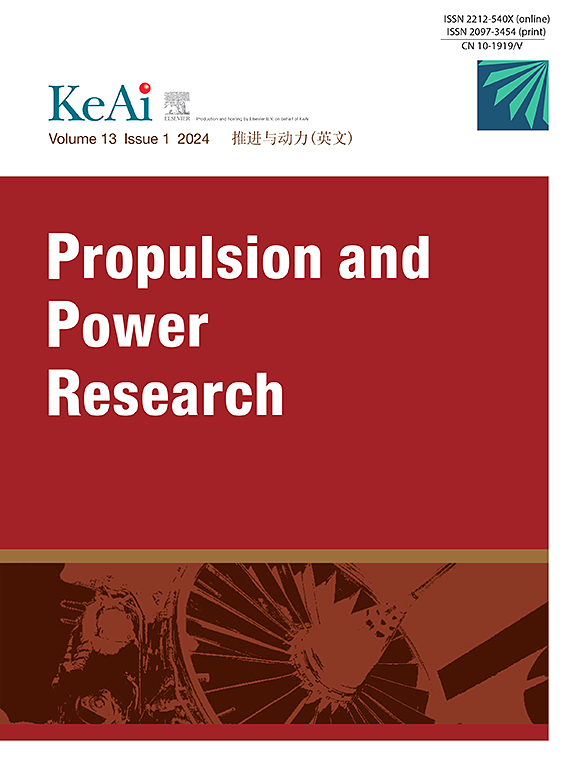利用黑箱法优化蒸汽轮机叶片级联的运行条件
IF 5.4
2区 工程技术
Q1 ENGINEERING, AEROSPACE
引用次数: 0
摘要
水滴会对低压蒸汽轮机造成腐蚀和侵蚀、凝结损失以及热效率降低。在本研究中,通过遗传算法(GA)和计算流体动力学(CFD)代码的自动链接,使用黑盒方法进行了多目标优化,以找到两个设计变量(入口滞流温度和级联压力比)的最佳值,从而降低汽轮机末级的湿度。湿蒸汽流数值模型用于计算优化参数,包括湿度分率、平均液滴半径、侵蚀率、凝结损失率、动能率和质量流量。验证结果表明,实验数据与数值结果非常吻合。根据优化结果,建议入口滞流温度和级联压力比分别为 388.67 (K) 和 0.55 (-)。其中,建议的最佳温度和压力比分别将液体质量分数和平均液滴半径提高了约 32% 和 29%。此外,在确定的最佳运行状态下,侵蚀比、冷凝损失比和动能比分别下降了 76%、32.7% 和 15.85%,而质量流量比上升了 0.68%。本文章由计算机程序翻译,如有差异,请以英文原文为准。
Optimization of operating conditions in the steam turbine blade cascade using the black-box method
Water droplets cause corrosion and erosion, condensation loss, and thermal efficiency reduction in low-pressure steam turbines. In this study, multi-objective optimization was carried out using the black-box method through the automatic linking of a genetic algorithm (GA) and a computational fluid dynamics (CFD) code to find the optimal values of two design variables (inlet stagnation temperature and cascade pressure ratio) to reduce wetness in the last stages of turbines. The wet steam flow numerical model was used to calculate the optimization parameters, including wetness fraction rate, mean droplet radius, erosion rate, condensation loss rate, kinetic energy rate, and mass flow rate. Examining the validation results showed a good agreement between the experimental data and the numerical outcomes. According to the optimization results, the inlet stagnation temperature and the cascade pressure ratio were proposed to be 388.67 (K) and 0.55 (−), respectively. In particular, the suggested optimal temperature and pressure ratio improved the liquid mass fraction and mean droplet radius by about 32% and 29%, respectively. Also, in the identified optimal operating state, the ratios of erosion, condensation loss, and kinetic energy fell by 76%, 32.7%, and 15.85%, respectively, while the mass flow rate ratio rose by 0.68%.
求助全文
通过发布文献求助,成功后即可免费获取论文全文。
去求助
来源期刊

Propulsion and Power Research
Multiple-
CiteScore
7.50
自引率
5.70%
发文量
30
期刊介绍:
Propulsion and Power Research is a peer reviewed scientific journal in English established in 2012. The Journals publishes high quality original research articles and general reviews in fundamental research aspects of aeronautics/astronautics propulsion and power engineering, including, but not limited to, system, fluid mechanics, heat transfer, combustion, vibration and acoustics, solid mechanics and dynamics, control and so on. The journal serves as a platform for academic exchange by experts, scholars and researchers in these fields.
 求助内容:
求助内容: 应助结果提醒方式:
应助结果提醒方式:


